Allergic diseases are a widespread pathology of childhood. Today, great strides have been made in the treatment of various allergic diseases, but the number of children, especially young children, with skin manifestations of allergies is growing rapidly. Allergic dermatitis is a fairly common skin lesion in children at an early age. It affects approximately 20% of children worldwide. Cream and ointment for skin allergies for children are now sold everywhere in pharmacies.
Allergic (atopic) dermatitis - what is it?
It is an allergic inflammation of the skin, which occurs when exposed to numerous factors and is manifested by itching, irritation and rashes in different areas of the skin. Allergic dermatitis in many cases occurs in children whose parents suffer from allergies.
In children, skin manifestations of allergies vary and depend on age, the form of atopic dermatitis and the severity of the disease. These differences determine which ointments and allergy creams for children will be used in treatment.
Forms of atopic dermatitis
- Infant form. The first skin rashes often appear in the first 2 - 3 months of life in the form of exudative diathesis. Appearing first on the face, the rash quickly spreads to the arms, legs and buttocks. In the affected areas of the skin, redness, swelling, a spotty-blistering rash, weeping, and then crusts occur. All these are manifestations of acute inflammation. When the inflammation subsides, the patchy rash becomes dry and peeling appears. The infantile form appears before the age of three.
- Children's uniform. These are children aged from 3 to 12 years. Mostly the skin folds of the elbows, popliteal, behind the ears, inguinal, as well as the outer side of the hands and fingers, neck, and ankles are affected. Characterized by redness, swelling of the skin, thickening and increased pattern on the skin. The skin has a dull gray tint and pityriasis-like peeling.
- Teenage form. It manifests itself in children from the age of thirteen as a pronounced thickening. The skin is dry and flaky; the face and upper body are most affected. Characterized by a continuous course with periods of exacerbations.
Based on the nature of the skin rashes, they are divided into:
- acute phase (skin redness, spots, blisters, erosions and peeling);
- chronic phase (thickening of the skin, flaky patches with scratching on the skin).
The severity of the disease is divided into: mild, moderate and severe.
Stages of development of atopic dermatitis
- Initial stage. It can develop in children prone to allergies and is manifested by a milky scab (limited redness of the skin with yellowish crusts), redness on the cheeks and swelling, and slight peeling.
- Stage of pronounced skin changes. Skin changes depend on the phase of allergic dermatitis.
- Remission stage. Disappearance of all manifestations on the skin. This stage can last from several days, months and many years, or may not occur at all.
- Clinical recovery. No manifestations of the disease for 3 years or more.
Causes and factors in the formation of atopic dermatitis
- Food allergens are products with increased allergic activity. These are cow's milk, chicken eggs, fish, seafood, cereals, citrus fruits, chocolate. Intolerance to cow's milk in newborns and children under one year of age occurs in 70 - 90% of cases.
- Aeroallergens (contained in the air) of residential premises - house dust mites, fungi (molds, yeasts), wool and excreta products of animals and insects.
- Chemical factors - various detergents, cosmetics, creams, powders.
- Physical factors - trauma to the skin during combing, sweating and wearing clothes made of synthetic fabric.
- Psychosocial factors - tense environment at school, difficulties in the family, stress.
- Environmentally unfavorable factors.
The main factor for the occurrence of atopic dermatitis is considered to be a violation of the barrier function of the skin. This is expressed by severe dryness of the skin. Microcracks that appear on dry skin are entry points for germs, irritants and allergens.
Treatment of atopic dermatitis
Skin itching and inflammation, sleep disturbances interfere with the child so much and reduce the quality of life that they become a difficult ordeal for the baby and for all family members.
The main goal of treating atopic dermatitis is to achieve remission of the disease by influencing the child’s body with agents that eliminate and reduce inflammation and itching of the skin, thereby improving the quality of life.
Main directions in the treatment of dermatitis:
- Removing allergens from the child’s environment.
- General drug treatment: 2nd generation antihistamines (loratadine, cetirizine); enterosorbents for the purpose of removing allergens from the stomach and intestines. An effective drug that can be prescribed to children is Enterosgel.
- External therapy. This is a treatment for skin manifestations.
Treatment of skin manifestations of allergies
An individual approach is used, taking into account the patient’s age, changes in the skin and drug tolerance.
Before treatment, it is necessary to clean the affected areas of the skin from crusts, scales and remnants of medications that were used before. To avoid these manifestations, it is cleaned by pre-treating it with lotion or oil. Softened crusts and scales are carefully removed with tweezers. The more acute the process, the more careful and gentle the external skin treatment should be.
First, it is recommended to use surface-acting agents (lotions, shaken mixtures), then moving on to agents that have a deeper effect (pastes, ointments, oils, creams).
Dosage forms for external treatment of atopic dermatitis
- Powder. This is a mixture of powdery substances. It is used when the activity of the process is minimal, when there are lesions with slight inflammation and itching. Not for use on wet surfaces.
- Lotions. These are medicinal solutions with low concentrations. Used in the acute phase of the disease with weeping areas. They have a drying and anti-inflammatory effect. Not for use in children under 6 months.
- Aerosols with anti-inflammatory and antiallergic properties. Skin-cap, Polysol, Neogelasol have antimicrobial and disinfecting effects. Aerosols with a healing effect are Olazol, Libyan.
- Pastas. It is a mixture of powders and fatty substances. It acts deeper than an aerosol, but more superficially than an ointment. Has a drying, cooling and anti-inflammatory effect (zinc paste). Important. Do not apply to wet surfaces.
- For a deeper effect, gel, creams and ointments are used. Gels have a dual effect - they dry out areas of weeping and moisturize dry areas of the skin. Antipruritic gels are Soventol and Fenistil. Solcoseryl and Actovegin gel have a resolving and healing effect.
- Cream. These are fatty substances mixed with water. It has cleansing, anti-inflammatory, softening, and moisturizing effects (Skin-cap, Atopic).
- Skin allergy ointment for children is prescribed for chronic illness.
It has a deep and long-lasting effect on the affected skin, softening and moisturizing it. Do not use on hot, wet surfaces.
For quality treatment, it is necessary to evaluate skin manifestations, the activity of the process and select the correct dosage form.
Medicines used in acute form
- If there are wet areas, treatment is carried out only with lotions and aerosols.
- In the absence of weeping areas on the skin, hormonal and non-steroidal anti-inflammatory external drugs in the form of paste, cream or ointment are prescribed to relieve inflammation and itching.
- Hormonal external medications are prescribed only for severe dermatitis or severe exacerbation, if there is no effect from other medications. The course of treatment is 3 - 5 days.
- To reduce inflammation, in mild to moderate cases, especially for children under one year of age, use anti-inflammatory non-hormonal agents (Elidel cream, Protopic ointment). They can be used from three months. There are no side effects from them with long-term use; they are applied to all areas of the skin without restrictions.
Drugs used in the chronic phase
Ointments and creams are prescribed that eliminate itching and dry skin, exfoliate and improve metabolic processes in the skin (Iricar, Desitin).
Modern anti-allergy medications for children are highly effective, safe for long-term treatment, non-addictive, available in a variety of dosage forms (aerosols, powders, creams, ointments, oils) and act locally without affecting the baby’s body as a whole.
In the treatment of allergic manifestations on the skin today, children's medicinal cosmetics are widely used: Atoderm cream, Sicalfat, Atopic. This cosmetics is recommended for use from birth. It has a disinfecting and anti-inflammatory effect and is good at healing, soothing and moisturizing damaged skin.
Skin care for a child with atopic dermatitis
Atopic skin requires daily and proper care. Parents often make the mistake of stopping caring for their baby’s skin after the exacerbation subsides. It is important to remember that the protective function of the skin is impaired both during an exacerbation and at the time of remission.
When restoring the skin, it is necessary to constantly use special products at the time of remission and exacerbation. To moisturize, soften, and cleanse the skin, such products (creams, balms, bathing gels) are developed taking into account the characteristics of atopic skin. Constant and competent skin care helps to achieve a mild course, prolong remission and reduce exacerbations.
Rules for caring for atopic skin.
- Cleanse and moisturize. The child's skin should be kept clean from head to toe. Daily bathing moisturizes dry, atopic skin, clearing it of impurities, germs and allergens. Daily warm baths with a temperature of 27 - 30 degrees are taken for 5 minutes. After bathing, gently dry your baby's skin with a towel and apply nourishing products with moisturizing ingredients (emollients) to the moistened skin for 3 minutes, paying special attention to areas with irritation and increased dryness.
- Moisturizing and softening. To eliminate dryness, you need to use emollient often and in large quantities. This is a moisturizing and softening allergy cream that can be used for infants and older children. A child’s needs for emollients are individual; they are used as many times as necessary without leaving the skin dry for even a minute. It is recommended to apply creams repeatedly, up to 10 times a day, to the entire body. When improvement occurs, the frequency of use is reduced to 2 - 3 times a day.
- Soothing care. Severe skin itching is one of the main signs. It provokes the child to scratch the irritated areas, which leads to trauma and an even greater decrease in the protective properties of the skin. Itching at night significantly worsens the child’s sleep and well-being. Soothing agents should be applied to irritated skin (with the exception of wet areas). Their use helps eliminate itching, relieve irritation, and ensure a restful sleep for the child.
Conclusion
Strictly follow all recommendations given by your doctor. This will prevent the disease from becoming chronic, eliminate skin symptoms as much as possible and improve your well-being.
A child’s skin does not perform its protective functions sufficiently, especially in the first few years of life. This is directly related to the fact that in childhood all kinds of dermatitis often occur - these are inflammatory reactions on the skin that are caused by external irritants and allergens. The treatment of these conditions is based on the use of creams and ointments, so all parents whose children suffer from dermatitis need to know how they differ, what topical treatments are available, and how to choose them correctly.
Types of creams and ointments: what you should pay attention to when choosing them
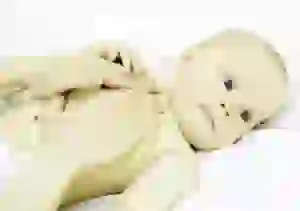
As already mentioned, children's skin is very delicate and is sensitive to various allergens. Paradoxically, sometimes even a drug prescribed for allergies can trigger a hypersensitivity reaction. Therefore, you need to select medications for topical use with great caution - not all of the products that are sold in pharmacies are approved for children. All medications for external use can be divided into 2 main groups: hormonal and non-hormonal drugs.
Hormonal ointments: main indications, prescription rules, side effects, list of drugs
Hormonal ointments, as the name suggests, contain hormones, namely topical corticosteroids. Their action is aimed at suppressing the synthesis of the main inflammatory mediators (leukotrienes, prostaglandins), which lead to swelling, redness, rash, burning, itching and other symptoms of dermatitis. Despite the extremely high effectiveness of these drugs, they should be used in childhood only in extreme cases and only on the recommendation of a doctor. Hormonal ointments are prescribed for diffuse damage to the skin, in case of ineffectiveness of other means, as well as for frequent relapses of dermatitis.
Hormonal ointments have many contraindications, including:
- viral, bacterial and fungal infections;
- endocrine disorders;
- scabies;
- individual sensitivity to topical glucocorticosteroids;
- helminthiasis;
- steroid dermatitis.
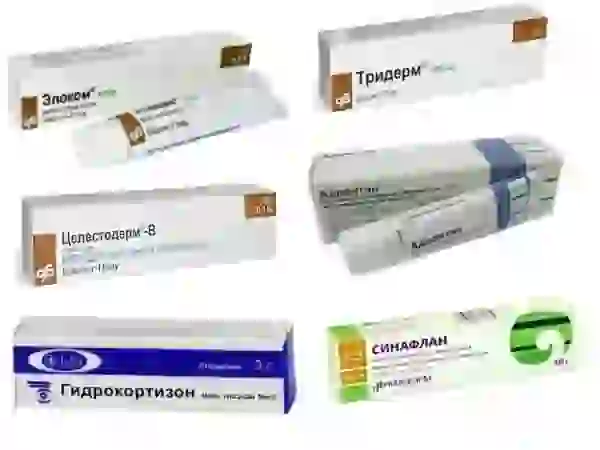
If glucocorticosteroids are used for a long time, increasing the dose uncontrollably, the following severe complications may develop:
- adrenal insufficiency;
- Itsenko-Cushing syndrome;
- skin atrophy;
- hair loss (alopecia) or excessive hair growth (hypertrichosis);
- increased skin pigmentation.
The risk of developing various secondary infections (bacterial, viral, fungal) and skin tumors also increases. Due to the large number of side effects, hormonal ointments are very rarely prescribed in early childhood (up to 3-7 years), and they are used with even greater caution to treat dermatitis in infants. You can read about other therapy methods in this article.
List of hormonal drugs for the treatment of dermatitis in childhood
For the treatment of allergic, atopic, contact and severe diaper dermatitis, Elokom and Advantan are used. These are drugs that have the least toxicity; pediatricians allow their use from 6 and 4 months, respectively. Long-term use can cause skin atrophy, so they are prescribed in short courses, on average 5-7 days. Below is a table with a complete list of hormonal ointments for children.
| Prohibited in childhood | Use only for severe forms of dermatitis | Allowed under doctor's supervision |
| Ointments with hydrocortisone: Triacort, Polcortolone, Lokoid, Cortef, Betameson, Fluorocort, Daktacort, Gioxysone, Sopolcort, Berlicort, Cortef, Nazacort, Fucidin, Sulfodecortem, Laticort | Lorinden, Sinalar, Betakortal, Triderm, Flucinar, Ultralan, Kuterid, Diprospan, Celestoderm, Daivobet, Belogent, Mometasone, Flunolon, Vipsogal, Belosalik, Celeston, Betazon | Elokom, Advantan, Silkaren, Momat, Monovo, Momederm, Skinlight, Skin-Cap, Powercourt, Uniderm, Cloveit, Clobetasol, Avecort |
Before using this or that product, you need to carefully read the instructions and make sure that the drug can be used in childhood. In addition to the age of the child, it is also worth considering concomitant diseases and features of the course of the disease.
Non-hormonal ointments: types, mechanism of action, main indications for use
These drugs are most often used in childhood, because they have few side effects and can often be prescribed starting at birth or from 2-6 months. Non-hormonal ointments are divided into 3 groups: antihistamines, local immunosuppressants (drugs that suppress local immunity), dermato-cosmetics. The following non-hormonal topical medications are most often used in pediatrics for the treatment of dermatitis:
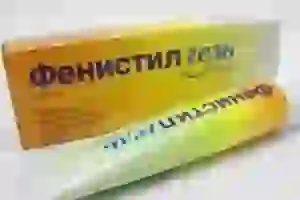
Fenistil-gel. A local desensitizing agent that inhibits the production of histamine, the main mediator of all allergic reactions. This remedy is successfully used in the treatment of all dermatitis of allergic origin. Can be used for children under 1 year, but not earlier than 1 month after birth.- Gistan. A drug based on natural ingredients that reduce the intensity of the inflammatory reaction. This remedy can be used even in newborns. It is important not to confuse this drug with another drug that is similar in name, but contains glucocorticosteroids. It is called “Gistan N” and is contraindicated for use in early childhood.
- Skin Cap. A drug that has a pronounced antipruritic, anti-inflammatory and healing effect. One of the most effective drugs among all non-hormonal ointments that are sold in pharmacies. Skin-Cap can be used for children from 1 year.
- Desitin. This ointment contains zinc oxide, which has drying properties. It is recommended to use this drug for atopic dermatitis in children (in the oozing phase). It is forbidden to use Desitin if there are manifestations of a secondary infection - in this case, ointments with antibiotics (erythromycin, syntomycin ointment) are first prescribed.
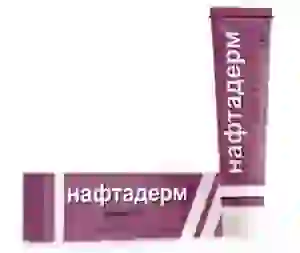
Naftaderm. A modern drug that has a moisturizing, local anesthetic, antipruritic and anti-inflammatory effect. Naftaderm is also prescribed for rapid restoration of the skin.- Elidel. Refers to a number of local immunosuppressants, i.e. suppresses cellular immunity and reduces the intensity of the allergic reaction. Can be used from 3 months for the treatment of atopic, allergic, contact dermatitis. Not recommended for seborrheic dermatitis.
- Radevit. A combined drug that has a complex effect on a child’s skin: relieves redness, itching, burning, swelling, and helps the skin recover faster. Radevit cannot be used in combination with hormonal agents, because this can lead to severe complications.
- Cynovitis. It is highly effective for seborrheic dermatitis. In addition to the antifungal effect, it also has an anti-inflammatory effect. It is allowed to use Cynovit from 1 year.
- Eplan. A drug that has a complex wound-healing and bactericidal effect on the skin. Eplan is a good remedy during the period of attenuation of acute symptoms of any type of dermatitis. You can use this ointment from the first days of a child’s life.
- Protopic. A medicine that is excellent against itching in atopic dermatitis, Protopic also quickly relieves inflammation, but, unlike hormonal ointments, does not cause atrophic changes in the epidermis with long-term use.
- Salicylic ointment. An inexpensive but proven remedy that is recommended for many dermatological diseases, including various types of dermatitis. Before the age of 1 year, it is better to use 1% salicylic ointment, and after 1 year, a concentration of up to 2% is also allowed.
- Boro-Plus. This is a herbal ointment, however, it very rarely causes allergies. Recommended as a local antiseptic and wound healing agent. It can be used from the first days of life for allergic, diaper, and atopic dermatitis.
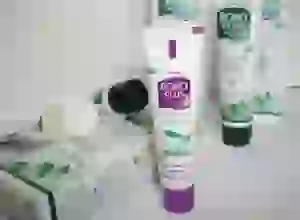
- Wundehil cream. It consists of natural components, namely, it is a beekeeping product, so it must be used with caution, because often causes allergic reactions. This cream for children can be used both during the newborn period and at an older age.
Review of creams, lotions and balms for skin prone to dermatitis
According to statistics, more than 80% of children are prone to dermatitis. The risk group includes children with chronic diseases of the digestive, nervous and endocrine systems, premature babies in the first year of life, newborns who are bottle-fed, and children with diathesis. To avoid the appearance of dermatitis, it is necessary to properly care for your baby's skin. A large number of tools have been developed for this:
- emollients (Bepanten, Dexpanthenol, Dardia, Emolium, A-Derma, Oilan). These products intensively moisturize the baby's skin, form a protective film on its surface that retains moisture and does not allow it to evaporate.
- La Cree. This is a popular children's cream for dermatitis; in addition to panthenol, this product contains natural extracts that moisturize the skin (for example, walnut oil, avocado). La Cree not only moisturizes the skin, but also accelerates tissue regeneration. Recommended not only as a treatment, but also as a preventative.
- Cream "Zorka". A hypoallergenic product that has an anti-inflammatory effect. Softens and moisturizes the skin, preventing it from peeling and the appearance of cracks and microtraumas. This remedy is used for all types of dermatitis when dry skin is observed. It also accelerates regeneration, so it is useful to use the cream during the recovery stage. This remedy was originally developed for animals and is therefore sold in veterinary pharmacies, but it is also effective for humans.
- Mustela Stelatopia. This product is available in the form of an emulsion, which is designed specifically for baby skin care. They are used not only as a treatment, but also as a preventive measure. Mustela Stelatopia is recommended for children whose skin is prone to diaper rash and atopic phenomena.
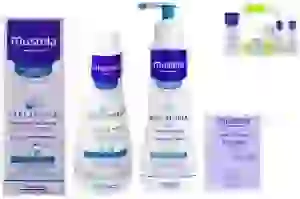
- Lipikar Balm. This is a lipid-restoring cream intended for dry skin of the face and body. The product can be used by both adults and children of any age. Lipikar Balm is often used to care for the delicate skin of a newborn. The product helps maintain normal levels of water and lipids (fats) in the skin.
- Avene cream, gel, balm. The company that produces medicinal cosmetics "Aven" presents a whole line of products for the care of dry and atopy-prone skin. This cosmetics contains only hypoallergenic substances, so the risk of developing allergic reactions and exacerbation of dermatitis is minimal.
Also, to prevent exacerbations, medicinal cosmetics from the companies Bioderma, Oilan, Louis Widmer, and La Roche Pose are used. The following moisturizing creams are very popular: Physiogel, Topicrem, Losterin, Sudocrem and Lipobase Baby. All of them are similar in their composition and mechanism of action. According to experts, regular use of high-quality creams significantly improves skin condition and reduces the risk of relapses of dermatitis.
Atopic dermatitis: how to choose the right cream
When choosing medicinal cosmetics, as well as medicines sold in the form of creams, you must consult with an experienced specialist. It is not always possible for a child’s parents to independently choose the right remedy among the variety that is sold in pharmacies. Only a qualified specialist can assess the depth and extent of the lesion and select the right cream.
If at the moment it is not possible to consult a doctor, then before purchasing you should definitely pay attention to the composition of the cream and read about the properties of each component. It must be remembered that the more chemical compounds there are, the greater the likelihood of repeated hypersensitivity reactions. Creams for atopic dermatitis must be hypoallergenic - this is the most important condition. If a child has dry and flaky skin, then it is better to give preference to emollients, moisturizers and medicinal cosmetics for atopic skin. If areas of weeping are observed, then an ointment containing zinc oxide will best help to improve the condition.
Is it possible to use baby cream for dermatitis?
In the acute phase of the disease, especially if it has arisen for the first time and the allergen has not yet been identified, it is better to abandon all additional cosmetics. In the future, you need to select the cream individually, but it is best to use medicinal cosmetics. It not only has the best composition, thanks to which such cosmetics moisturize the skin as much as possible, but also prevents the occurrence of exacerbations of dermatitis in the future.
Before applying the product to a large area of skin, you need to conduct an allergy test at home: apply a small amount of cream to your hand and observe the skin reaction. If after 24 hours there are no manifestations of allergies (rash, redness, swelling, itching), then this remedy can be safely used.
Useful tips: how to apply creams and ointments correctly to achieve maximum therapeutic effect
In order to achieve the desired effect in a short time, you need to know a few basic rules on how to use ointments and creams:
- Before using the drug, you need to thoroughly wash your hands and cleanse your skin of dirt;
- the product must be applied in a thin layer;
- to facilitate the application of these products, it is recommended to use a sterile napkin;
- You cannot independently change the frequency of use and the amount of ointment used - in order not to make a mistake, you need to carefully read the instructions for use;
- if the ointment needs to be rubbed into the skin, then this should be done with light massage movements for 5-7 minutes.
If you apply the product incorrectly, you can not only reduce the effectiveness of the medication, but also worsen the condition of your skin.
Advice from Dr. Komarovsky
The famous pediatrician, Dr. Evgeny Komarovsky, has repeatedly touched upon the topic of treating dermatitis in children. He emphasizes that the skin condition of a child suffering from atopic dermatitis should be constantly monitored by parents. The doctor advises actively using emollients. At the same time, he says that they should not be expensive, and in no case should they be spent sparingly. Komarovsky claims that up to 300-350 ml of emollient can be used per week, which means that you need to select available products.
Dr. Komarovsky also insists on using hormonal ointments if advised by a family doctor or pediatrician. Komarovsky has repeatedly said that the side effects from the use of hormone-based ointments are exaggerated. He believes that the rational prescription of drugs such as Elocom and Advantan almost never causes complications or side effects.
In addition to pharmacotherapy, Dr. Komarovsky insists on proper care of the child’s skin. He says that excessive sweating should not be allowed; the child should not be wrapped up during a walk or at home. The doctor also draws attention to the fact that it is necessary to constantly maintain normal levels of temperature and humidity in the room, bathe the child for no more than 10 minutes, and use only hypoallergenic products.
Sometimes dermatitis requires long-term treatment, and one of the most important components of this process is the use of ointments and creams. Only an experienced specialist can choose this remedy correctly, so when the first symptoms of dermatitis appear in a child, you should urgently contact a medical facility. The child’s condition in the future directly depends on how early treatment with creams and ointments is started.
The problem of peeling, itching and skin rashes in children worries many parents. Children are very worried about such symptoms, and parents are concerned about the possibility of alleviating their condition and getting rid of this unpleasant problem. In this case we are talking about atopic dermatitis - a rather complex allergic reaction.
This irritation can occur from various allergens - food, clothing, plant pollen. It can even be caused by nervous shock.
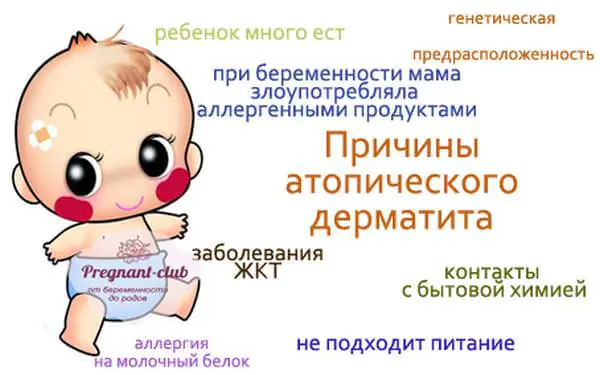
But this is only the first stage of the malaise. In the future, if you do not pay attention to its therapy, allergic rhinitis and manifestations of bronchial asthma may occur. For this reason, treatment of pathology requires quick and correct therapeutic measures, mainly on the part of parents. If time is not wasted, future irreversible consequences can be prevented.
This malaise requires an extraordinary therapeutic approach, in particular, treatment with external drugs that help get rid of the external manifestations of the disease - creams and ointments. Their choice is quite wide. Based on their composition and action, they are all divided into hormonal and non-hormonal. The latter should be used in case of initial manifestation of malaise. Such products reduce itching, relieve inflammation, and have an antibacterial effect. The most common localization of rashes: face, elbows, knees.
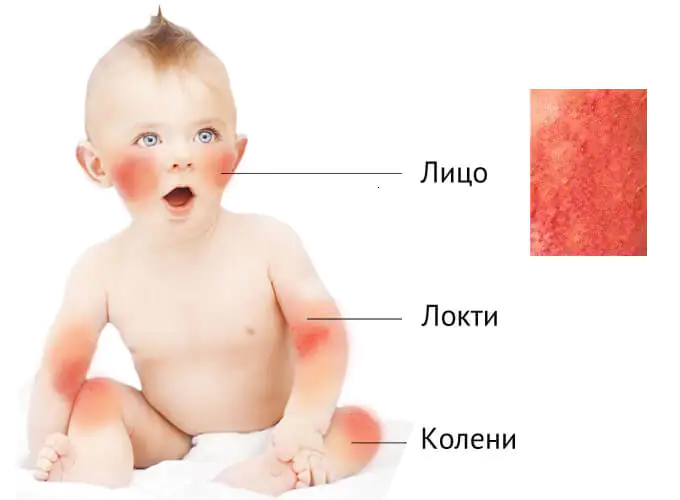
But no matter what they are, you should not prescribe a cream for atopic dermatitis in a child. Young patients should only be treated by a doctor. But knowledge about the composition and medicinal properties of these products will not hurt. Let's look at the most popular of them.
Non-hormonal agents
Skin care for atopic dermatitis is an important therapeutic step. Creams for this procedure are prescribed for different stages of illness. All products used to treat children are hypoallergenic and free of any harmful additives, flavorings, etc. After all, such substances easily cause an additional reaction in the child’s body and contribute to additional irritation of the skin.
Creamy medications for atopic skin are intended to be used in children with severe drying and peeling. Their fat-filled composition and dense structure facilitate their rapid absorption by the dermis, which creates the proper therapeutic effect. By the way, ointments and creams are among the most effective substances that allow you to take care of the skin in case of allergic redness. Epidermal cells are restored faster when used.
A good moisturizer for atopic dermatitis usually demonstrates its durability and rapid treatment results. Relief usually occurs 10-15 minutes after application. And the results of the impact are visible from the first days of use.
Pharmacies offer a variety of creams and ointments. Their non-hormonal composition is safe for the child. It is recommended to use these drugs for a long time until all symptoms cease to appear and you feel better.
All these lubricating substances are divided into:
- antihistamines;
- immunosuppressive;
- dermato-cosmetological.
The first of them are prescribed infrequently, since they do not have a long-term effect, therefore they are recommended only in the initial period of illness. The most famous of them are Gistan and Fenistil gel (0.1%).
Immunosuppressive creams and ointments have been used recently. They treat well initial and moderate forms of atopy. The most famous cream here Elidel, 1%. By the way, it is used for children during rashes on different parts of the skin.
Among the most common non-hormonal drugs are: Zinc ointment. It is distinguished by the fact that it quickly relieves inflammation, heals wounds, and disinfects affected areas of the skin. Its analogues are Diaderm, Tsindol, Zinc Oxide, Desitin. This substance is also an additional component of the ointment. Fleming. It should also be mentioned here Zincundan and Undecin with zinc undecelinate, which have antifungal properties. 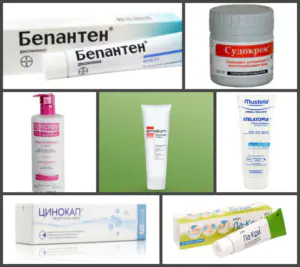
But non-hormonal dermato-cosmetological preparations deserve to be discussed in detail. After all, there are so many of them that it will be difficult for parents to choose suitable moisturizers for atopic dermatitis in all this variety.
When using such ointments, you must remember that they must be used every day. It is also important to feed a small child with allergic pathology with anti-allergenic formulas such as
“Alfar”, to remove harmful substances, do not forget to give Enterosgel.
The most popular medicinal creams and ointments include:
- Bepanten – baby cream, used for problem skin in babies, even infants. Depanthenol, its main active ingredient, helps epidermal cells quickly recover. The ointment under this name, unlike the cream, is supplemented with lanolin and petroleum jelly. For irritations of an infectious nature, you should use the drug in this series Bepanten plus. If you want a skin care product with a cooling effect, then buy lotion Bepanten;
- Tsinocap – refers to substances with a high degree of safety. Therefore, it is distinguished by the possibility of long-term use. It has a therapeutic effect on all areas of the skin in children starting from one year old. It contains zinc, which relieves skin from flaking, inflammation and itching. This drug is also available in the form of a spray that has a drying effect, which is usually used for acute dermatitis;
- La Cree – an ointment consisting of natural ingredients that allow its use for atopy in infants. The cream is easily combined with similar antihistamines. It has no contraindications. The products of this brand also offer emulsions, cleansing gels and balms, as well as shampoo for atopic dermatitis for adults and foam shampoo for children;
- Sudocrem - also from the category of ointments with antiseptic and antimicrobial action, together with Levomekol, Levosin and Fucidin. Indicated in case of diaper rash, irritation and other inflammatory problems on the skin. Use it on problem areas 6 times a day;
- Topicrem – refers to products that improve skin hydration. Treatment of it when affected by atopic dermatitis occurs due to the hydrants, urea and glycerin contained in it. It is also used to dilute corticosteroid lubricants. The cream is not addictive. There is also an option for advanced forms of dermatitis - Topic-10.
From a series of cosmetic products, the cream has proven itself well Mustela, which has taken its rightful place among topical products for problem skin in newborns and older children.
It should also be said about Emolium - products for dermatoses produced under this brand: shower gel, creams and emulsions.
It is important to remember that drug treatment is necessarily indicated in conjunction with non-hormonal agents that affect the skin. In addition, the diet must be followed.
Hormonal ointments and creams
A cream of this order that treats atopic dermatitis necessarily contains glucocorticosteroid hormones, mainly prednisolone, hydrocortisone or fluticasone. This ointment for atopic dermatitis in children is usually used when previous therapy has not had the desired results, in complicated cases of illness.
The use of hormonal external preparations is indicated if the wounds and ulcers that appear do not heal for a long time.
Many parents, if necessary, use this method of treatment, try to limit the use of hormonal external agents. They are afraid of side effects and the body’s ability to quickly get used to them. But this fear is not justified if the cream or ointment is used strictly as prescribed by the doctor, without violating the rules of its use.
A hormone-based cream for atopic dermatitis for children usually treats severe forms of the disease or its protracted forms. Many of these remedies are also used for atopic dermatitis in adults. Local administration of such drugs has virtually no adverse effects. It is impossible to refuse to use ointment for atopic dermatitis.
All products are divided into 4 groups according to their effects:
- very strong - Dermovate;
- strong – Flixotide, Celestoderm;
- average – Afloderm, Lokoid;
- weak – Hydrocortisone, Prednisolone.
In case of significant damage or exacerbation of the pathology, short sessions of hormonal therapy with strong creams and ointments are recommended. Treatment lasts for 3 days. If the patient insists that weak drug creams be used, then the therapy will be longer - 7 days.
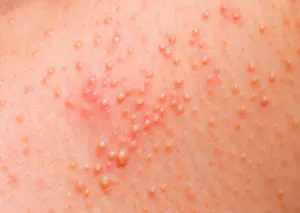
In case of an acute form of the disease, it is necessary to stop using hormonal creams together with nourishing and moisturizing creams. This dilution does not reduce the side effects of hormones. But their therapeutic effect may be delayed.
The most applicable hormone-based products for the treatment of dermatitis are the following ointments:
- Celestoderm – helps relieve the main manifestations of allergies and reduces inflammation. Apply in small portions to dry skin 1-3 times a day. Children are allowed to use after 6 months of age;
- Flucinar – helps overcome itching, inflammation, allergic rashes. Therapy with it should not be carried out for more than 14 days. By the way, it should not be used by infants. The cream is allowed only for children over 2 years of age;
- Advantan – applied to affected areas of the skin once a day. The ointment is indicated for infants from 4 months of age. Despite the fact that the drug is well tolerated, and only sometimes unpleasant manifestations are possible;
- Elokom – with its main component mometasone, thanks to which the cream has a long-lasting effect in the treatment of allergic dermatitis. Treat with this ointment once a day. It cannot be used more often for children due to the possibility of serious complications;
- Skin Cap - antihistamine cream, which is approved for use from one year onwards. It is usually well tolerated by children, rarely causing side effects. In addition to antihistamine properties, it is characterized by the ability to solve antifungal and antibacterial problems;
- Hydrocortisone ointment – many experts consider it the most effective treatment for atopic dermatitis, especially in children. Although it, like other means of this kind, has a number of contraindications.
If the atopic skin surface becomes wet, infants will be saved by zinc ointment, used mixed with hormonal cream. For example, it could be Elokom ointment.
Care and prevention
To avoid relapses of skin disease and further problems, you should ensure daily skin care. It is important to bathe your child every day so that medications are more easily absorbed into the skin. At the same time, for better cleansing, its experts recommend only cold baths using cosmetic products. Cosmetics are usually indicated for medicinal purposes - soaps, mousses, balms, gels, etc. They can simultaneously have a beneficial effect on the child’s skin without causing any irritation.
As you can see, treatment with external agents for such a difficult disease in children is a significant method of getting rid of this pathology. It all depends on how well the cream, ointment or other drugs are determined, the success of the treatment depends. However, we must remember that these are all just auxiliary means. The main course is prescribed by a doctor on an individual basis.
Also, to gain a more complete understanding of this disease, we recommend watching a video by the popular doctor Komarovsky:



